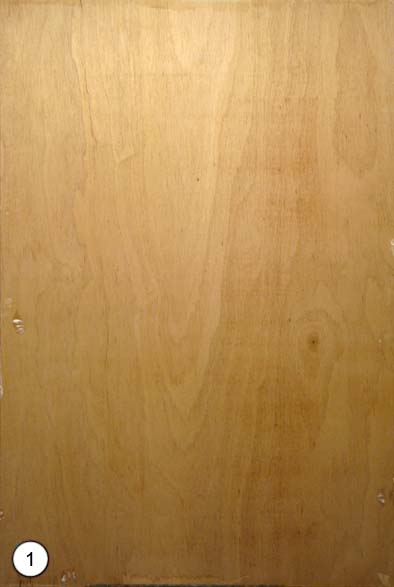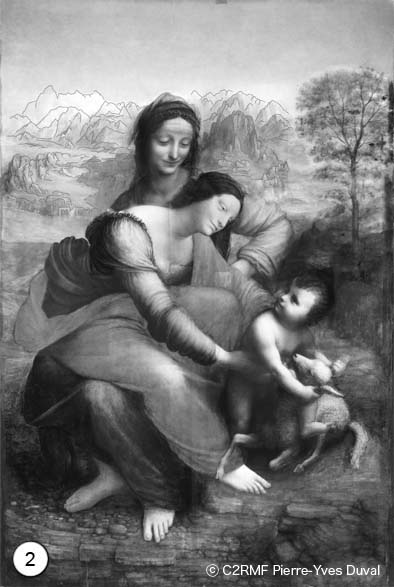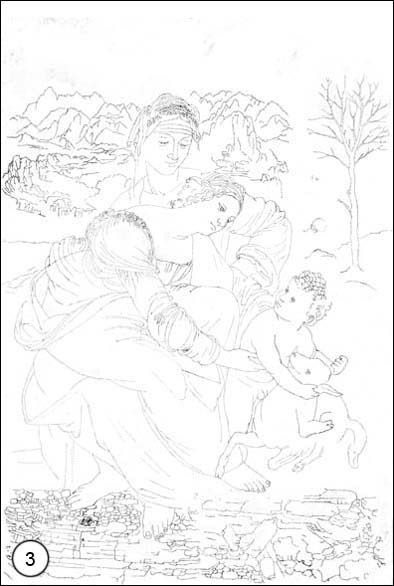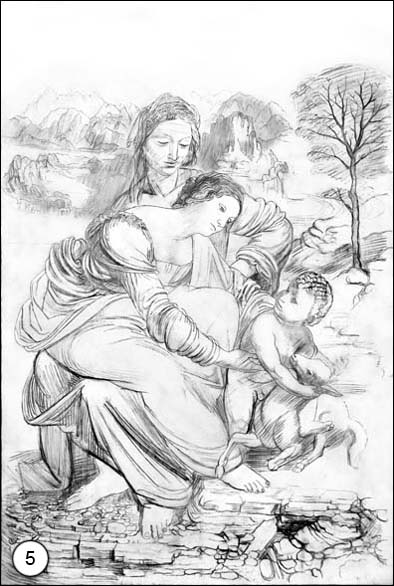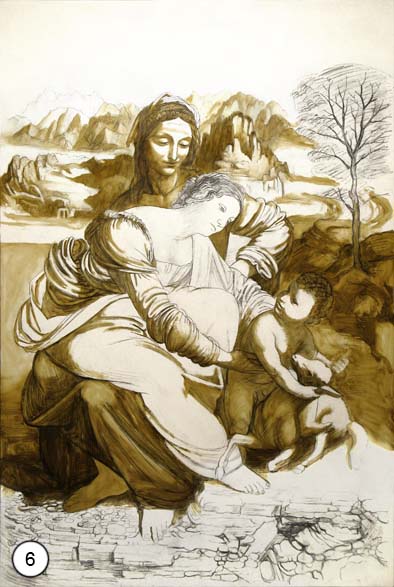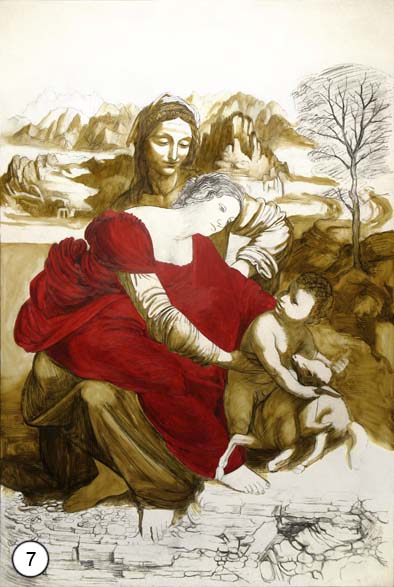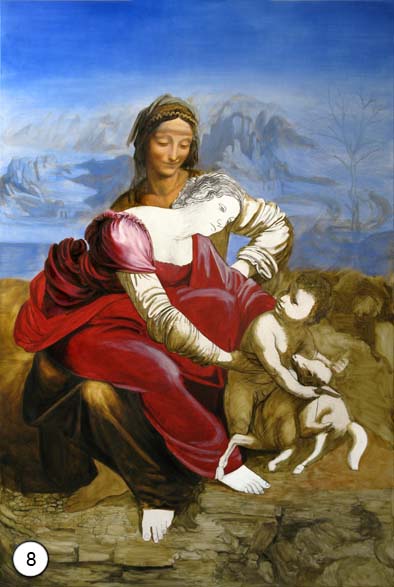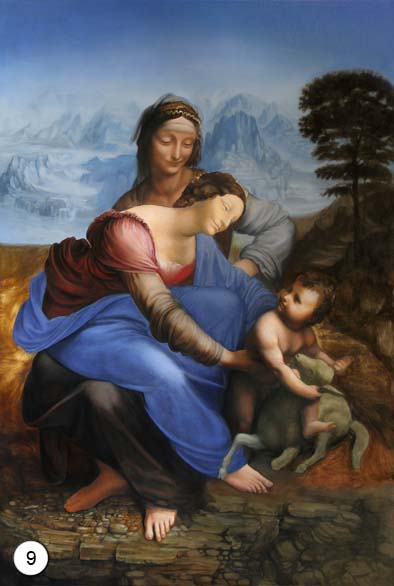The Virgin and Child with Saint Anne from Leonardo da Vinci
Process of a ready-made, work in progress...
Introduction
In 2015, I launched a new personal art project, Miam-manufacturing, to introduce different themes turn around the role of the contemporary artist face to the art market and the business of museums. A part of this project focuses on the trade of painter and the production of pictures and images, also the way of using new technologies to support the process of painting. One of the work presented in the "Miam-manufacturing" project is a ready-made derived from the Leonardo da Vinci masterpiece The Virgin and Child with Saint Anne, part of the collection of the Louvre Museum. I planned to create a painted copy in the same size as the original, to reach the quality of a facsimile to be able to use it as a ready-made. The concept is to build another point of view between Leonardo, Marcel Duchamp's work, and contemporary art.
Part 1: in the footsteps of Leonardo.
The Leonardo's masterpiece has been restored at the beginning of the 2010's, followed by a huge and mediatic exhibition in 2012. The work done by the the team of historians and specialists of the Louvre museum, has been introduced in a magnificent catalog in wich we can discover the history of the painting and also the process of creation used by Leonardo da Vinci. This catalog was the starting point to set up the copy I wanted to do, to understand and carry out the process of a workshop of the Renaissance.
|
|
"Click" on pictures above to open them at full size in another window.
1. First I ordered a wood panel of the same size as the original (113 x 168 cm). My copy is made up of a single panel of Plywood while the original is made up of an assembly of three panels of poplar joined together in their height. I prepared my panel with gesso primer, fifth layers of them followed by an "imprimatura" layer of Zinc-white oil paint. The restoration of the original painting revealed that Leonardo set up his panel with a white imprimatura based on oil.
2 & 3. I reported an underdrawing on my panel by the way of spolvero, the same technique used by Leonardo and others workshops of the renaissance. The model of this drawing is a black and white photocopy of the original painting on which I also reported the skeleton of the tree (revealed by reflectography), and traces of mountains.
"Click" on pictures above to open them at full size in another window.
4. I fixed the points of charcoal leaved by the spolvero with an underdrawing of grey oil-paint wash drawn by pen.
5. I completed the underdrawing with the use of charcoal, to determinate some zones of shadows, also to break the stiffness of the pen's drawing, and bring some life and contents into it. Researches made by the team of the Louvre museum revealed that Leonardo made his underdrawing on the last layer, on the top of the imprimatura. Usually painters of the Renaissance leaved the underdrawing between de last layer of gesso and the imprimatura. Thus the drawing was already softly hidden before to receive the layers of painting, while in Leonardo's case the underdrawing is still visible under some part of the painting. This means that the drawing is a part of the creative process from its first lines until the final completion of the picture.
6. I completed the underdrawing with the use of an oil wash of burnt umber. This step doesn't clearly appear on the Leonardo's panel. So to have an idea of what it could have been, I referred to some of his unfinished paintings such as Saint Jerôme (Vatican) and the adoration of the Magi. (Uffizi Gallery - Firenze)
"Click" on pictures above to open them at full size in another window.
7, 8, 9. Samples of different steps. In the idea to follow the process of Leonardo's work as mentioned in the 2012's catalog, I prepared the color of the Virgin's dress with an under-layer of red lacquer covered by a layer of ultramarine blue. Then step by step I worked on each part of the composition with different layers of paint to cover all the surface.
But already during these first steps of completion, I was able to see the limits of the wish to follow the exact process of Leonardo. The use of modern materials such as a plywood panel and industrial pigments (Ultramarine instead of lapis lazuli for example), also the inadequacy of the documentation, made this goal clearly impossible to reach. From the underdrawing until the last layers of varnish, a work of Leonardo was always in movement. During all the process Leonardo slightly transformed the composition and the figures. It has been a long process including modifications and corrections that we can not see anymore despite several discoveries appeared with the work of restoration. The copy only reflects the final steps left by Leonardo.
What were the steps of the original one ? In wich order Leonardo completed the composition ? Did he cover all the surface before to focus himself on details ? Did he start by the sky, the landscape or the figures ? Maybe he completed the faces before to start anything else ?
To reach the goal of a high-quality work, I had to rethink all the method of traditional painting I was using. I had to appropriate the "Saint Anne", make it mine trough another long process to be able to use it later as a ready-made ...
ⓒ Yann Le Gal 2019, from Leonardo da Vinci, all rights reserved
Part 2: Traditional tools and technology at the heart of the Workflow redesign.
